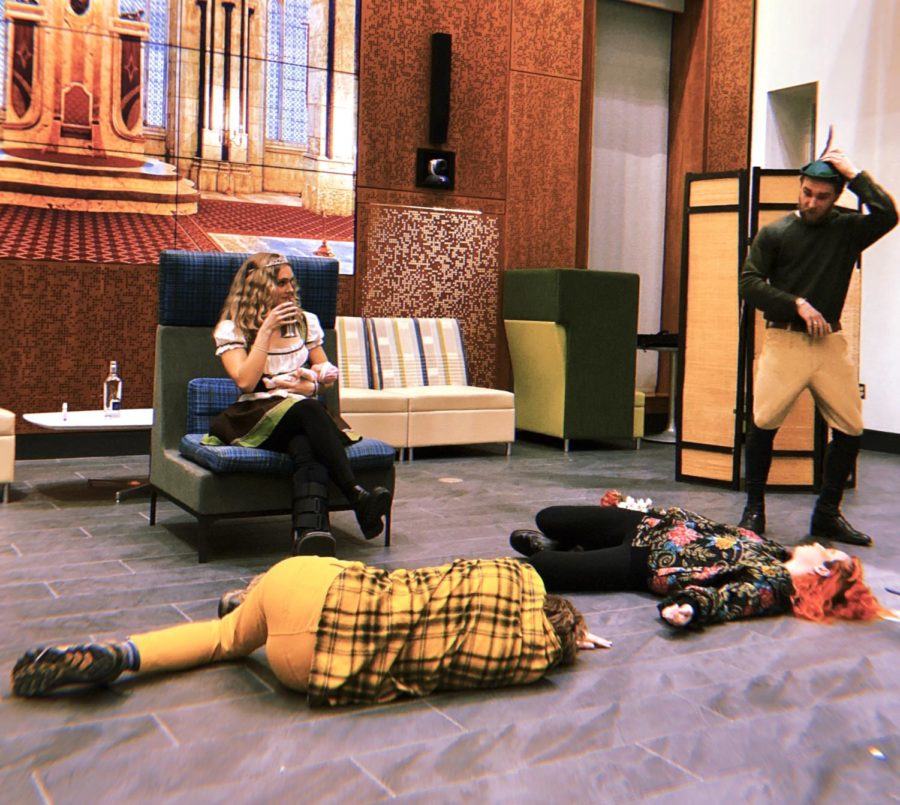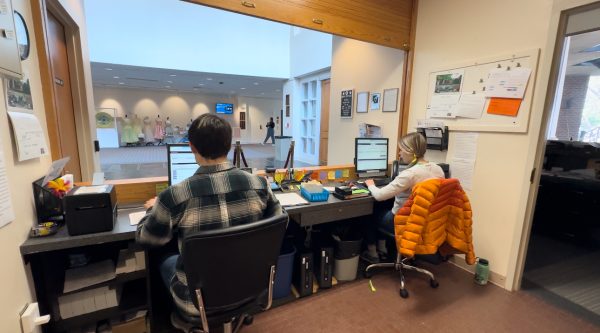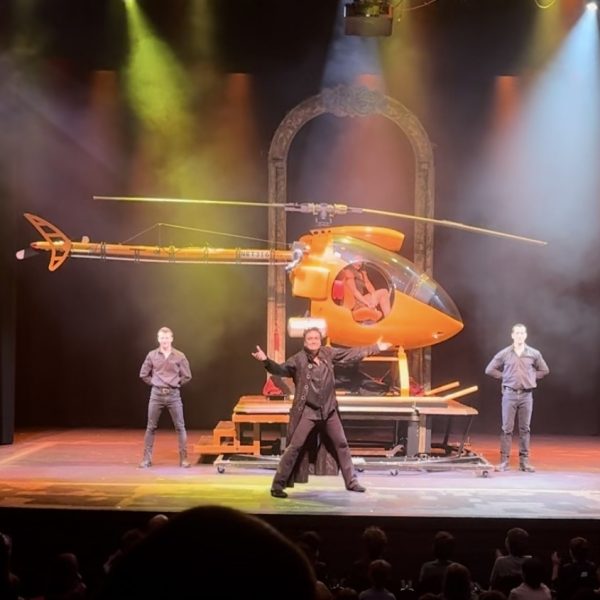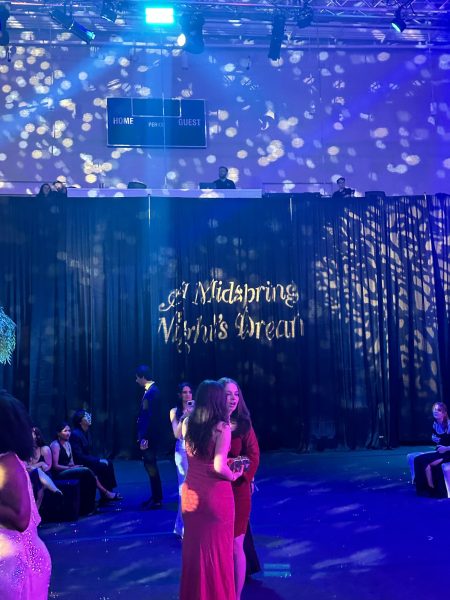German-332 students perform self-written plays based on German fairytales
Generalprobe celebrates 30th anniversary with variations on Grimm Brothers’ stories
Students taking German 332 deliver a twist to the fairy tale classic, “Rumpelstiltskin.”
April 12, 2022
Started in 1992, Washington and Lee’s Generalprobe has served as an annual tradition of performances for the German department. For three decades now, students have put on plays and musicals written by German playwrights under the direction of Professor Roger Crockett. Since 2015, students have written and performed their own plays for their peers and other faculty members.
“It was really great to see everyone’s shows come together,” said Finn Connor, ’23, who acted in one of the plays. “The first half of the term was us writing the plays as rescripts of Grimm fairy tales, and the second half was bringing it all together into a 30-minute act.”
Due to COVID-19, the GERM-332 class was conducted virtually for the past two years, and the plays were shared online as radio plays. This year’s Generalprobe, performed in the CGL Atrium March 30, April 1 and April 2, marked not only its 30th anniversary, but a return to the standard in-person performance format as well.
The program included three plays adapted from Grimm Brothers’ fairy tales: Bluebeard, Rumpelstiltskin and Rapunzel.
Bluebeard is the story of an eccentric-looking king with a string of disappearing wives who marries a young woman. When he leaves the castle, he gives the keys to his new bride and allows her to have free roam of the castle with one exception; she is not to enter the underground chamber.
Her curiosity gets the best of her, and she enters the chamber while he is gone and discovers the corpses of his prior wives. Bluebeard returns and finds out that she disobeyed him, so he threatens to kill her. However, he allows her to have one moment alone, in which she calls on her family for help. They come back and defeat Bluebeard, and so the tale ends.
In Generalprobe’s version of “Blaubart,” the young woman that Bluebeard marries is none other than Nickelodeon cartoon protagonist Dora the Explorer. Dora explores the castle with her trusty Map and the help of the audience. She discovers the dead wives as three imprisoned German zombie ravers. When Bluebeard returns, she is rescued by Diego and Boots, who slay the evil king with a banana.
Rumpelstiltskin follows the story of the daughter of a miller who promised the king that she can spin straw into gold. The king’s curiosity is piqued, so he brings the girl to a room full of straw and demands that she turn it all to gold. As she despairs in the room, an imp-like creature appears and comforts her, offering to turn the straw to gold in return for her necklace. This happens twice more, and the girl trades her ring, then, having nothing left, her firstborn, for the creature’s magic. The straw is spun into gold, and the king and the girl marry and have a child.
The creature comes back to collect on the promise, but the new queen refuses to give her child up, so he offers her one final deal; she can keep the child if she guesses his name in 3 days. She guesses incorrectly the first two days, but on the final night, the creature is seen celebrating in the woods and singing out his name, so she is able to guess his name, Rumpelstiltskin, correctly in time to keep her child.
In Generalprobe’s version of “Rumpelstilzchen,” the events of the play follow the fairy tale directly up until its end, when the new queen decides to enact revenge on her father for betraying her, and her husband, the king, for being a bloodthirsty tyrant. The queen coerces Rumpelstilskin into killing her husband and father, before poisoning the creature as well. The play ends with the king’s servant finding the queen sitting on the throne with her child above the bodies of her father, the king and Rumpelstiltskin.
Connor, who played the queen’s father, described the nature of the class as a “wonderful surprise.”
Connor reflected on his favorite moment in rehearsal as one of encouragement and learning.
“I remember one day we were just starting to memorize our scripts and [Professor Crockett] came to watch us,” he said. “I was speaking about turning straw into gold, but accidentally said turning straw into straw. We laughed a lot about that, and I liked how the focus of the class, while being an application of German grammar skills, was not so much on being perfect, but rather on speaking with ease and having fun…I felt really uplifted.”
The last play centered around the tale of “Rapunzel,” the princess with magical hair that can restore youth and heal any injury, who was stolen away from her parents by a witch. A charming thief climbs up Rapunzel’s tower while the witch is away and helps her escape the tower so she can experience life on her own.
They quickly fall in love, but the witch grievously injures the thief. Rapunzel’s hair is cut, and its magical healing power gone. Nevertheless, Rapunzel manages to heal the thief without her power, and they live happily ever after.
Generalprobe’s version is called “Rap-punzel.” In this modern retelling of the fairy tale, Rapunzel is separated from her parents when her father gives her to the witch in exchange for a diaper that never needs to be changed.
Years later, teenage Rapunzel begs the witch to let her go to a rap concert. At the same time, Rapunzel’s father meets her future beau in jail. The two men are freed and begin work as window cleaners, and Rapunzel meets the prince as he raps outside of her window. The two sneak off to the rap concert. When they return, the witch attempts to murder the prince, but Rapunzel saves him with the power of rapping.
German department head Professor Debra Prager strongly encouraged students to support their peers by watching the “hilarious and jaw-dropping” performances and consider taking the 332 course in later years.













